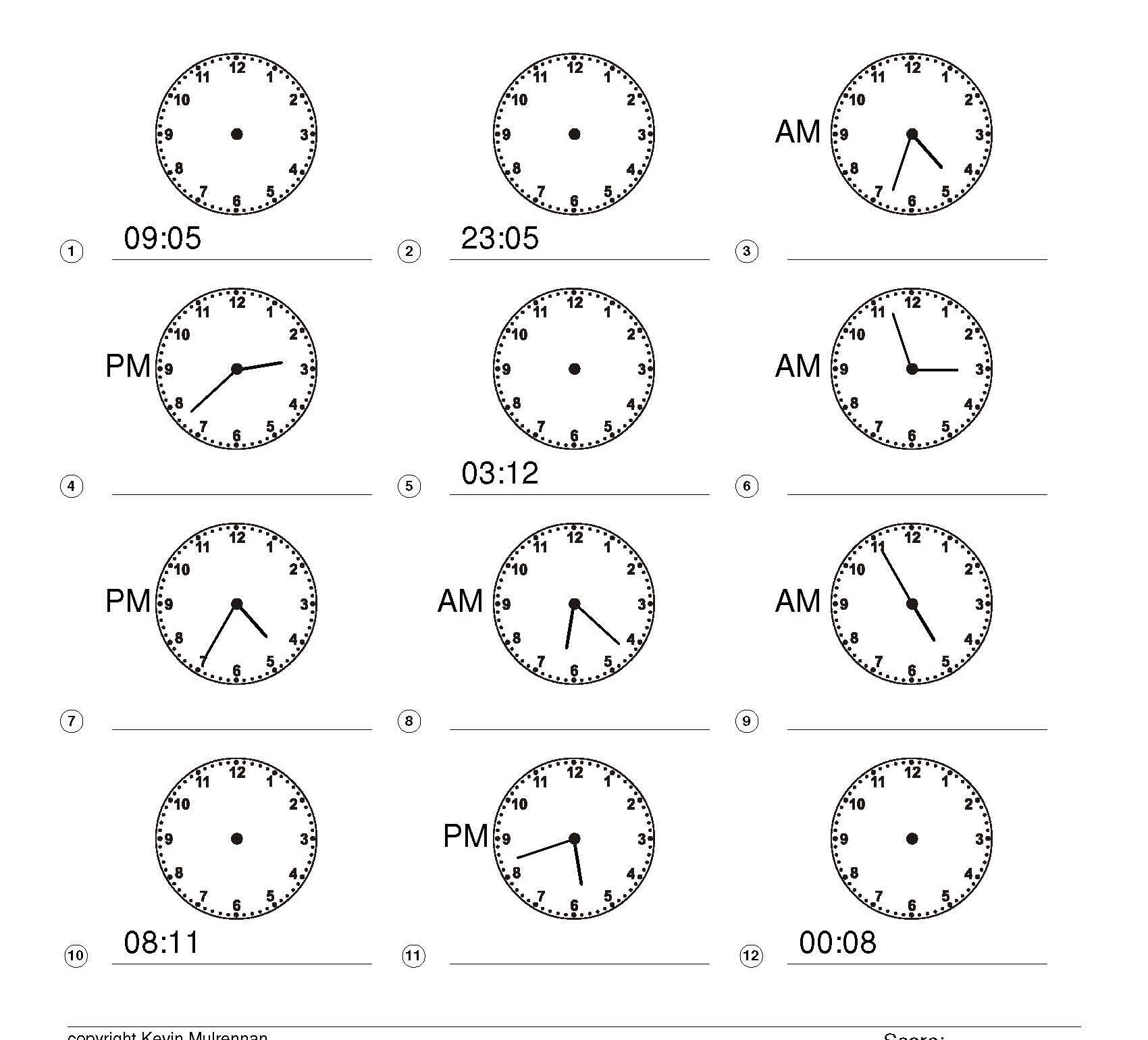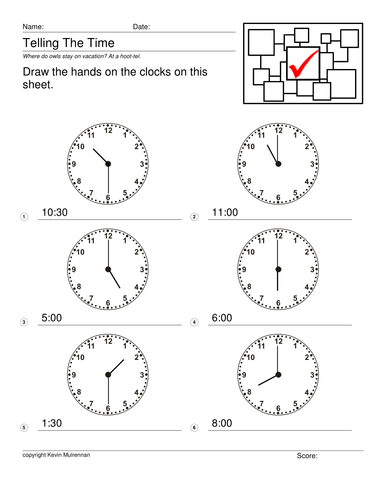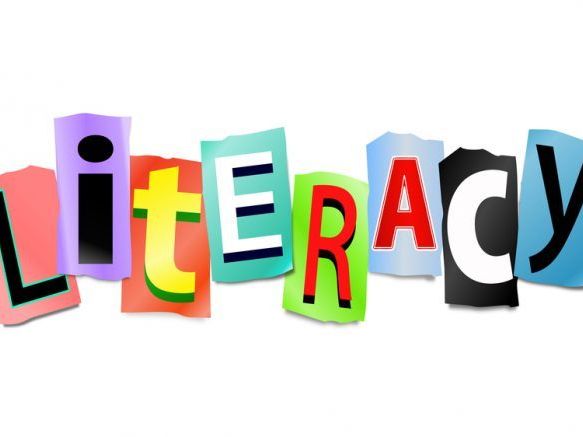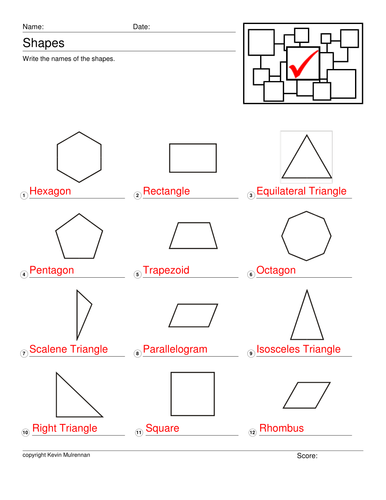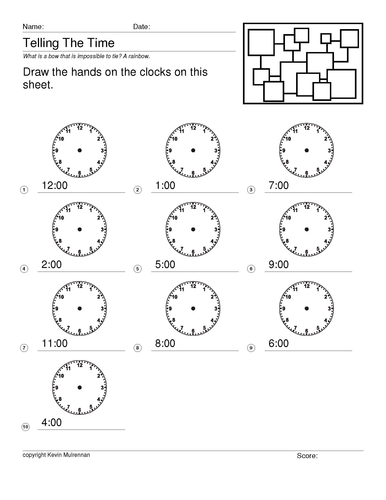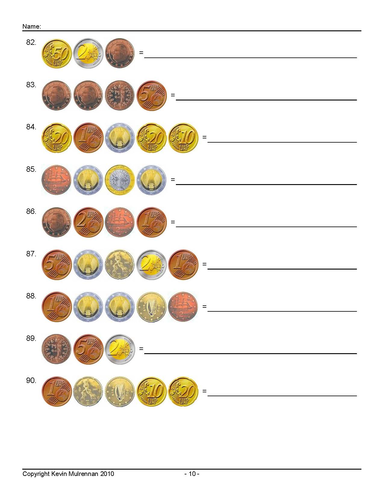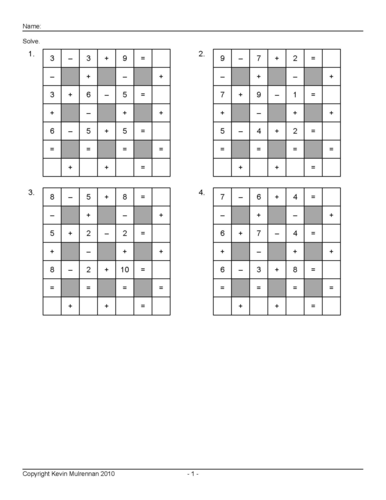354Uploads
96k+Views
28k+Downloads
Mathematics
Bundle Sale

Bundle Coins Worksheets UK Euro Shopping
A good value bundle.
Fill in the worksheets on counting Euro coins, UK coins and a series of shopping questions that test knowledge of money etc.
Bundle Sale

Mega Bundle Mathematics Worksheets KS2 Best Viewed Numeracy Literacy
A great bundle of my most viewed worksheets.
Incredible value.
Please look at my shop and get the details of the individual goodies you can get.
Sale

Telling The Time 96 Worksheets with Answers Maths Differentiated Clocks KS1 KS2
98 worksheets plus answers on telling the time.
Pupils have to draw the time on the clock faces.
Plenty of variety on the sheets. e.g. time on the hour, half hour, quarter hour, plus some five minute ones.
Sale

1000 Questions Advanced Division No Reminders KS2 Mathematics Calculator Use
Please check out my bundles which provide great value.
1000 questions on division. There are no remainders
Great for calculator use.
Answers provided.
Pupils divide a three digit number by a 2 digit one.
Sale

KS2 Mathematical Puzzles Across Down Subtraction
100 puzzles plus answers.
Fill in the gaps in the grids. Mainly 2 figure numbers but some 1 figure ones.
Great for homeworks or time filling.
Bundle Sale

Bundle Coins Worksheets KS2
Bundle.
100 Worksheets on counting coins
Plus questions on Pythagoras and addition
Teaching Resources 100 worksheets Coins KS1 Teachers Counting KS1 KS2
100 Questions on Pythagoras Answers Provided
100 Worksheets Addition Maths Easy at Start Hard at the End
Bundle Sale

Bundle Coins plus Across Down Subtraction and Addition
A bundle.
Coins worksheets plus ones on acoss down puzzles (subtraction and addition)
Teaching Resources 100 worksheets Coins KS1 Teachers Counting KS1 KS2
2
KS2 Mathematical Puzzles Across Down Subtraction
2
Maths Puzzles Across Down Addition 100 Puzzles Plus Answers
Sale

Year 5 Literacy and Maths Planning
Gathered together my lessons for year 5 Maths and English for a particular year. There’s about a year’s worth in there.
Plenty of great ideas. the zip has the lot. the general download a few to have a look at.
Sample planning :
Start by showing the word ‘Instructions’ – TTYP what does this mean?
Come back together and establish that instructions are a set of commands given to help someone do or create something.
Show the children a recipe and the instructions as to how to play Sevens using cards. Look at the instructions. What do children notice about how these are laid out? They are given in an order.
They are bullet-pointed.
Each sentence is fairly short.
There are many ‘bossy’ verbs: ‘place’, ‘play’, ‘turn’ etc. Explain that we call these ‘imperative’ verbs – an imperative is a command. Discuss why it is helpful to have ‘bossy’ verbs and short clear sentences.
There is a title which tells you what is to be achieved.
Numbers or time connectives used e.g. 1, 2, 3 or later, next - are used to show chronological order.
Create a features list on the working wall by sticking post it notes onto a piece of sugar paper –these can be used throughout the unit as a game to start the lesson.
Divide the class into three teams. Deal out seven cards to each team and the teacher! Play a little of the game of sevens, following the instructions. Demonstrate how we can follow the instructions to play.
Return to features of instructions displayed on working wall.
What can you remember about these? Children turn to a partner and tell them 3 different features. Report back & discuss.
Show children the instructions checklist (working wall). Have we mentioned all of these features?
Ask children to think of a new idea for a card game. Use a talking partner & brainstorm a game idea on whiteboards.
Gather everyone’s ideas/discuss the concepts. Pick one idea.
Decide how many players we will need & how to play it. Allow children time with talking partners to practice playing the game. Ask some children to demonstrate.
How will we write the instructions? What comes first? (Title, subheading.) What is our first instruction? Repeat for a few more sentences.
Sale

Year 4 Area and Perimeter Maths Lesson Plan Squares and Rectangles
Nice lesson.
Possible cross curricular links. Outside area planning.
Learning Objectives. Ma 1 Organising and explaining
Ma 3 Calculate perimeter/area of squares and rectangles.
• To explain methods and reasoning
• To solve mathematical problems, recognise and explain patterns and relationships.
• Calculate perimeters and areas of rectangles.
• Find the largest area that can be made with a rectangle that has a perimeter of 26 metres.
Success criteria.
• To be able to work out the area of a rectangle or square.
• To make different rectangles that all have the same perimeter.
• To recognise the largest area.
• To compare the relationship between the length of the sides and the area of the rectangle.
• To explain reasoning.
Mental/Oral. 10 mins. LSA to support LA children.
The answer is 16. What is the question?
Using the yes/no cards hold up the correct side in response to the question.
15 + 1, 10 + 4, 18 – 2, double 2 ……. (12 questions.)
Can we think of any more to add to the list?
Discuss any misconceptions as they arise, also the quick ways to add numbers mentally. Emphasis on bonds and doubles or near doubles.
With a partner, using InWB find as many questions as possible for the statement.
The answer is 24. What could the question be?
Vocabulary.
add
subtract
multiply
divide
double
near double
half
equals
Resources :-
Yes/No cards.
InWBs and pens.
Nice worksheets and powerpoint to do an investigation on the area and perimeter of squares and rectangles.
Possible cross curricular links. Outside area planning.
Learning Objectives. Ma 1 Organising and explaining
Ma 3 Calculate perimeter/area of squares and rectangles.
• To explain methods and reasoning
• To solve mathematical problems, recognise and explain patterns and relationships.
• Calculate perimeters and areas of rectangles.
• Find the largest area that can be made with a rectangle that has a perimeter of 26 metres.
Success criteria.
• To be able to work out the area of a rectangle or square.
• To make different rectangles that all have the same perimeter.
• To recognise the largest area.
• To compare the relationship between the length of the sides and the area of the rectangle.
• To explain reasoning.
Mental/Oral. 10 mins. LSA to support LA children.
The answer is 16. What is the question?
Using the yes/no cards hold up the correct side in response to the question.
15 + 1, 10 + 4, 18 – 2, double 2 ……. (12 questions.)
Can we think of any more to add to the list?
Discuss any misconceptions as they arise, also the quick ways to add numbers mentally. Emphasis on bonds and doubles or near doubles.
With a partner, using InWB find as many questions as possible for the statement.
The answer is 24. What could the question be?
Vocabulary.
add
subtract
multiply
divide
double
near double
half
equals
Resources :-
Yes/No cards.
InWBs and pens.
Sale

Area Perimeter maths Net Cubes Compound Shapes Year 5
Work out the area an perimeter of cubes etc.
You can print out shapes and give to pupils.
Learning Objectives. Ma 1 Organising and explaining
Ma 3 Calculate perimeter/area of squares and rectangles.
· To explain methods and reasoning
· To solve mathematical problems, recognise and explain patterns and relationships.
· Calculate perimeters and areas of rectangles.
· Find the largest area that can be made with a rectangle that has a perimeter of 26 metres.
Success criteria.
· To be able to work out the area of a rectangle or square.
· To make different rectangles that all have the same perimeter.
· To recognise the largest area.
· To compare the relationship between the length of the sides and the area of the rectangle.
· To explain reasoning.
Model the way to answer the question referring to work of a few weeks ago on perimeters. How many different sized pig pens can be made using only 12 fencing panels?
Discuss how the children think they could solve this problem.
The Problem.
We want to make a school garden and grow vegetables. At night time the rabbits and deer will come and eat them. To stop them we need to put a fence around the area. However we can only afford to buy 26, one metre long panels.
Find the largest area we can fence off to make a rectangular vegetable patch?
Remember it can only have a perimeter of 26 metres.
Vocabulary.
add
subtract
multiply
dividedouble
half
equals
rectangle
square
area
perimeter
cm2
Resources:-
multi-link. L/A
rulers.
Squared paper.
Home work:- if applicable.
Assessment. Children exceeding the objectives.
Sale

Year 1 Maths English Planning
Planning for English and Maths. 56 files.
sample:
Text:
This is the bear and the scary night
Genres covered in this unit:
Narrative SPAG focus:
Monday: spelling patterns
Tuesday: use and to join clauses
Wednesday: high frequency words
Thursday: high frequency words
Friday: time connectives
Key teaching input/texts/questions/
clips etc Steps to Success
Read the story This is the Bear and the scary night
Discuss character, setting, key events etc…
Discuss what happened in the beginning, middle and end of the story. Explain to the children that this week they are going to write their own story similar to the bear and the scary night.
Ask children to describe their character to their partner (can be their favourite toy or the teddy they bought into school on Friday).
Ask children to share their ideas about their story.
What is the setting?
What are the characters doing?
What is the problem?
How are the characters feeling?
How does your story end?
Mild: describe your main character
Spicy: share your ideas with your partner
Hot: listen attentively to your partner
Extra Hot: Act out key events from your story
LA Activities MA Activities HA Activities
Read to Write
Mrs Preston Phonics
Mrs Simpson Talk for writing and act out their story
Photos for books
Resources: The bear and the scary night book, cards with questions
Give 3 minutes for children to recap their story.
Who is their main character?
What happens at the beginning, middle and end of the story?
Model how to put key ideas onto their plan.
Steps to Success
Mild: recap your story with your partner
Spicy: Identify the beginning, middle and end of your story
Hot: Write key ideas onto your story plan for the beginning, middle and end.
Extra Hot: Check your partner’s plan is sequenced correctly
Bundle Sale

Bundle Year 5 Literacy Planning Autumn Term KS2 Greek Myths Big Write Plus Fractions Questions
A great bundle.
Year 5 Literacy planning.
And half a million Fractions questions plus equivalent fractions worksheets.
This is a zip file containing Literacy planning for a year 5 class (Autumn term).
It consists of 14 short term plans I designed. There is one Literacy lesson per day.
You will get 14 Microsoft Word documents. They are based on the Greek myths.
I’ve also included for free some extra teaching materials that you can use. I’ve included too 3 medium term plans , one for each term). These cover plans and ideas not just for Literacy, but other subjects as well.
I’ve also included an extra week from the next term. Feel free to use it to plug any gaps.
This will help you do your own planning. Feel free to cut and paste into your own school’s plans.
Ideal for someone who had to do a term’s supply like I had to do.
Please bear in mind:
every school is different. My plans assume you have the aide of a TA, but this is not essential. There is no differentiation in the planning. Everyone does the same thing to the best of their ability.
you may want to add your own detail. These are short term plans remember.
I have used walts and wilts. Your school may do something different.
A very few number of weeks have a small gaps for things like tests and inset days. Use the extra week one planning for the next term (included for free) if you wish.
Sale

Year 4 Planning Spring Term Numeracy Literacy KS2
Important! If you’d like to buy the whole year’s planning (Autumn, Spring and Summer) you’d be better off buying my bundle.
Planning for the Spring term for year 4.
You get 160 mb of material so good value imo.
I taught mainly in Catholic schools so has a Catholic bent. But as we live in a multicultural society, this should be no problem.
You get planning for:
creative curriculum
Literacy
Numeracy
P.E. (some)
Science (some)
R.E. (Christmas, Lent etc)
Loads of great lessons to ease your Sunday afternoons. Just cut and paste into your school template.
Sale

Year 5 Autumn Numeracy Mathematics Planning & Telling Time Worksheets
Reclaim your Sundays!
Year 5 Autumn planning for Mathematics.
Plus great worksheets on Telling the Time.
13 weeks worth of Maths plans.
Adapt them for your school. Cut ans paste and adapt to your needs.
Topics include
Counting, portioning and calculating
3d shapes
Securing number facts, calculating, identifying relationships
and many more
Sale

Teaching Resources worksheets Shapes Maths Triangles Octagons
I have designed 100 worksheets on shapes for primary school children. They have to write the name of the shape on the sheet. An answer sheet is in the picture. A great reinforcement exercise or you can give a sheet to a bright pupil to keep them occupied. You can use your professional judgement to choose the appropriate sheet. Answer sheets are provided for all worksheets.
Sale

11+ Verbal Reasoning Questions Letter Patterns Vol 2
Another 100 worksheets on volume 2. I've included more questions per sheet and for some I have omitted the alphabet grid. I have designed 100 worksheets on letter patterns for the 11+ non verbal reasoning questions. There are 100 worksheets provided on a cd. Letter patterns is an important aspect of the 11+ exams. Ideal for parents, pupils and tutors. Answer sheets provided. Introduce some logic and problem solving skills to students with the Letter Patterns worksheet. Sets of letters related in some way are displayed. Students must find the next two letters in the pattern for each set of letters. You can see an answer sheet in my picture with the answers in red.
Sale

100 Questions on Pythagoras Answers Provided Mathematics Geometry KS2
**100 questions on Pythagorus.
IF YOU LIKE THUS I HAVE A REALLY BIG FILE IN THE SHOP
15000 Pythagoras Questions Pythagorean Theorem Maths KS2 KS3
Answer sheets provided.
A good little exercise for your students. Using a calculator this should keep them busy and help you teach Pythagoras’ theorem.**

Freebie Telling the Time KS1 KS2 Mathematics
A sheet with answers where pupils have to draw the hands to show the time on a small clock.
If you like this, please visit my shop where there is a more sophisticated product.

Euro Coins Worksheets KS1 KS2 Mathematics Freebie
A worksheet that pupils have to fill in. They have to add up the coins.
If you like it, please visit my shop that has an enhanced similar product.

Maths Puzzle Across Down Addition and Subtraction Puzzle Plus Answers
Great for reinforcing maths.
Across-Downs is a fun activity that reinforces addition and subtraction skills.
The object of the exercise set is to find the answer for each row and column, then use those answers to calculate the final answer in the lower right-hand corner of the puzzle.
This tests addition and subtraction.
If you like this freebie, please visit my shop which has loads of puzzles for sale. Buy the bundles for best value.


